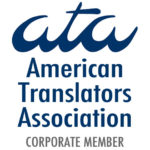A bill is currently being deliberated in the California State Senate that would require pharmacies to take “the needs of patients with limited English proficiency” into consideration when labeling prescription medications. Medication errors, a leading cause of medical accidents, may be reduced when patients have improved understanding of how to take prescription drugs.
With approximately 18% of the U.S. population over the age of five speaking a language other than English (according to 2000 U.S. census figures), professional translators have a duty to aid health care providers to ensure accurate and useful translations of not only prescription drug labels, but instructional and educational materials as well.
Five main issues continually plague the accuracy of health care translations and jeopardize the health care provider’s ability to communicate effectively with the patient.
(1) Literacy and educational levels: Health care texts presented for translation are often written in a sophisticated manner that can be easily misunderstood by the target audience.
(2) Imprecise writing: Typographical errors, incorrect punctuation and/or poor word choice in the source document may lead to unintentional changes to the meaning of the original text.
(3) Inappropriate use of color: Various cultural groups assign different meanings to the same color. For example, while red signals danger to many English speakers, other cultural groups such as the Chinese view red as a symbol of luck or happiness.
(4) Representation of numbers and dates: The formatting of dates, weights and other numerical information may lead to confusion, as different language groups write this information in different ways.
(5) Cultural and religious sensitivities: The use of certain anatomical terms may be considered offensive to some cultural groups.
In order to combat these problems, it is important for translators to develop systems including style guides or glossaries, built in collaboration with various clients. In addition to factoring in style decisions, translators should also consider the level of education of the target audience, the location of the target population, formal or informal tone, idiosyncratic titles, capitalization, and translation for the web. Glossaries should be thought of as living documents that grow and change over time. They ensure the consistent use of terminology from document to document while accounting for client preferences.



